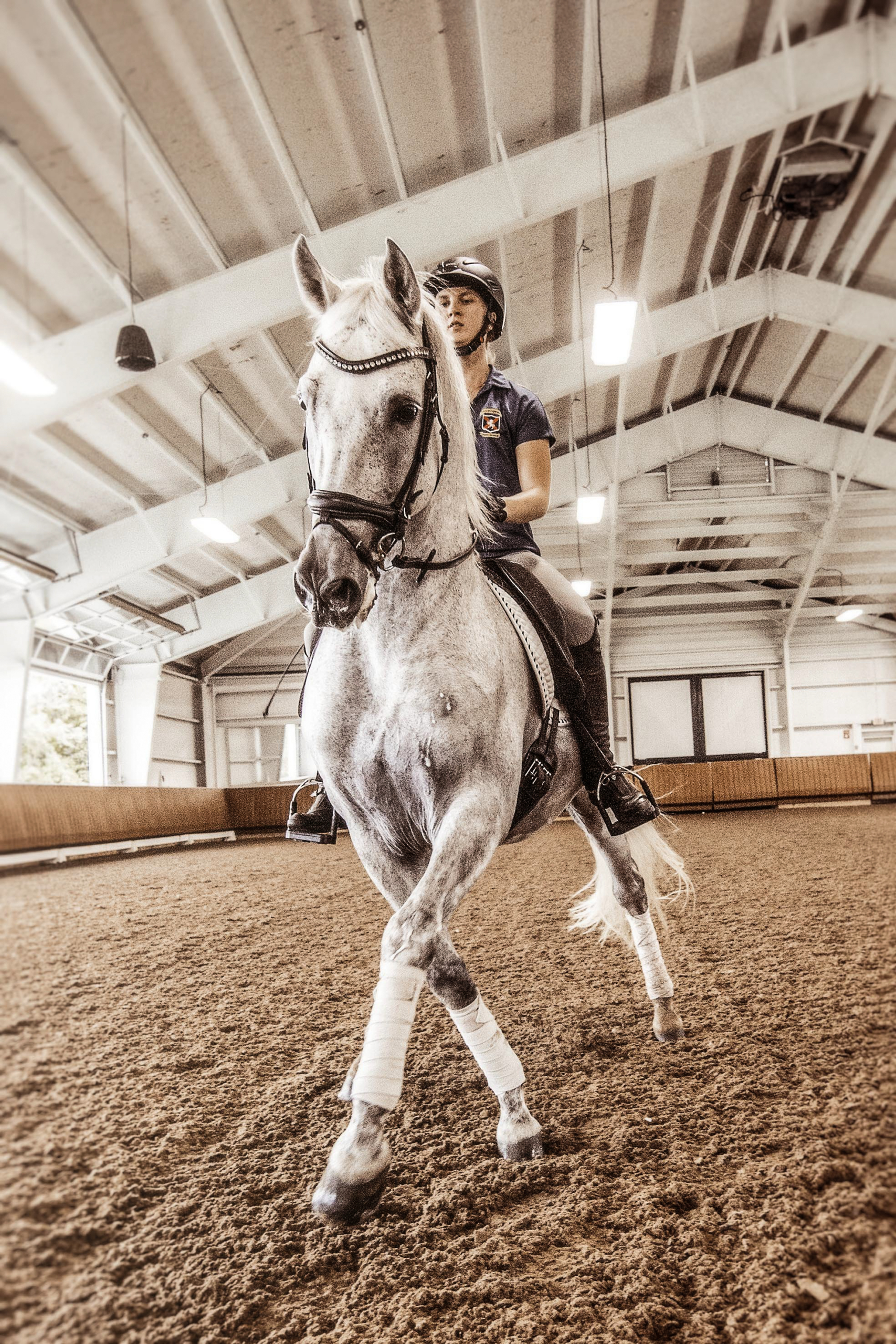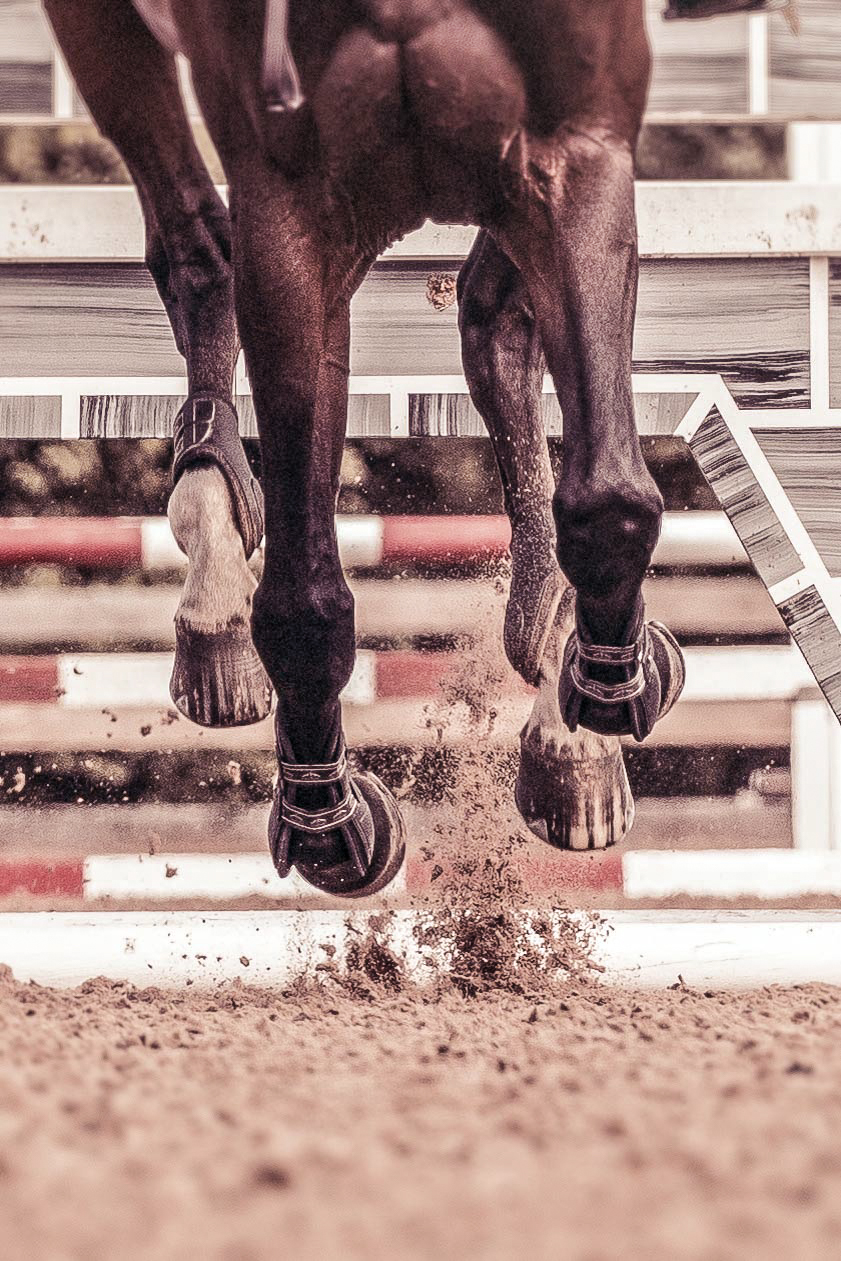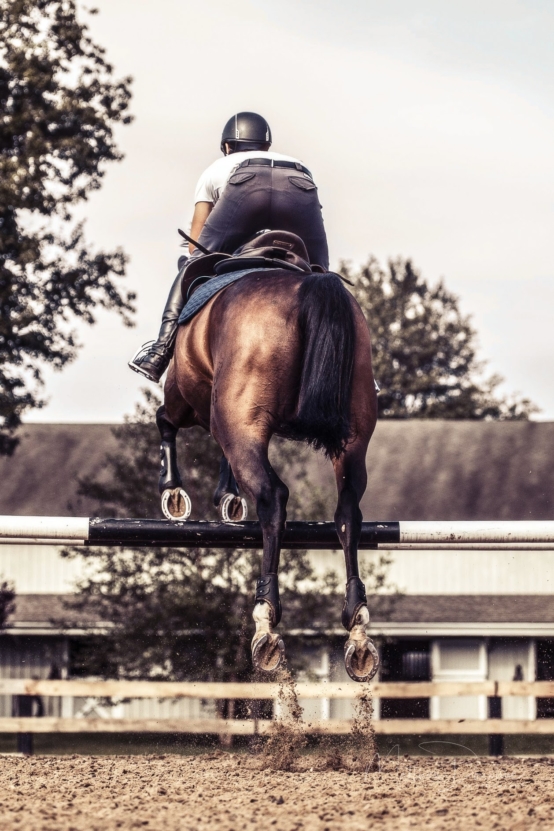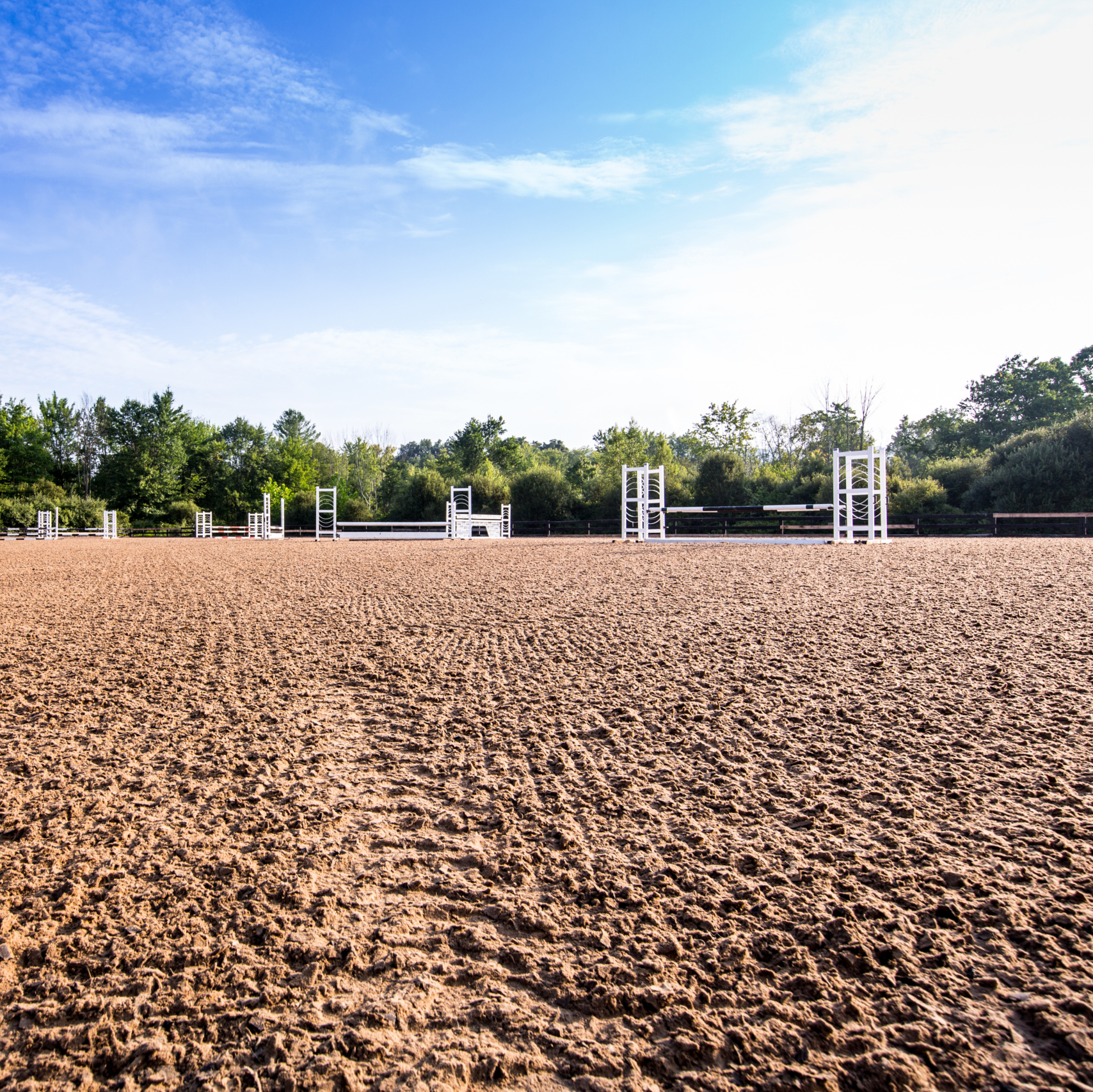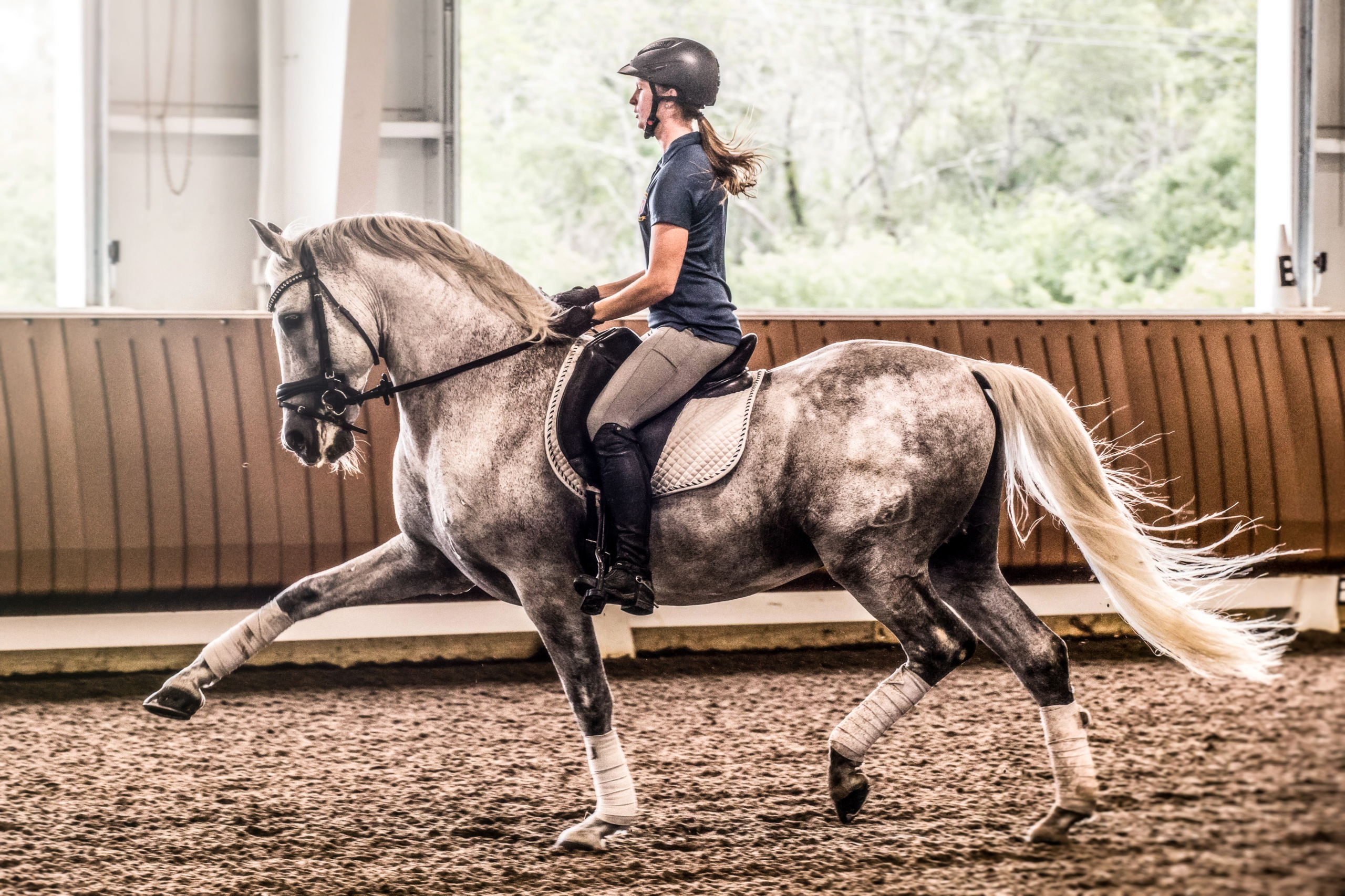Put Your Footing First: How to Care for a FootingFirst™ Arena
Our goal at FootingFirst™ is to install beautiful, functional arenas that will perform for decades. We do our best to make sure our customers’ footing is suited to their location and needs, and anyone with a FootingFirst™ arena knows that we stand behind our installation and products. However, even the most user-friendly footings require regular maintenance by the owner, and annual service by a FootingFirst™ professional. Below, we provide a guide on how to maintain an arena in a manner that will ensure longevity, proper performance, and above all, the safety of the horses and riders.
Tips for Regular Grooming:
Make sure you have the right harrow for your footing: If you don’t have the right harrow for your footing you’re going to have major issues. Plain sand footing (or western-style footing) uses one type of harrow, and footing that has fiber blended into it uses a different type of harrow.
Choose the proper vehicle: If a tractor with a three-point hitch is available, we highly recommend a harrow that operates off a three-point hitch. A quad or a UTV type vehicle is fine if a tractor is not available, and there are all kinds of harrows that work on those types of vehicles perfectly well, but a three-point hitch is the best. A busy facility with many horses should definitely consider a tractor and three-point hitch system.
Maintain the harrow: A harrow requires grease, cleaning, and general maintenance. Order teeth and tines for the harrow in advance. Have a spare set ready to go, and don’t wait until they wear out to replace them. If the harrow has pneumatic tires, make sure the tires have the proper air pressure, as a flat tire on one side will make the harrow lean to one side. The same goes for tractor tires. If a tractor tire is flat, again, the harrow will lean to one side and drag incorrectly.
When grooming an arena, allow for enough time: Sometimes an arena needs ten minutes of grooming, and sometimes it needs thirty minutes to get the footing in the right place. But when grooming the arena, give the footing what it needs. Don’t expect to do the same thing every day for months on end and have the footing be maintained properly. Sometimes it needs more work.
Grooming pattern: There are all sorts of strategies, but the most important part of grooming is that it’s not done the same way each time. Use a common-sense pattern, and change it up once in a while. Tight circles can be used to loosen the footing if necessary, but they should not be used every day.
No speeding: When grooming, don’t drive too fast. The inner tractor tire compresses in the corners and makes the footing uneven; you get the NASCAR effect, and the corners get too high. However, driving too slowly will lose the action on the spring tines. At the right speed they vibrate, and the vibration helps the footing flow right out from underneath the harrow, and you get a nice fluffy, even footing.
Don’t groom more than necessary: Particularly on footing with fiber. Some farms groom frequently because they like the tidy look. However, grooming does wear the footing a little bit. It also tends to pull the fiber to the top, whereas the horses blend the fiber in. The more the horses turn the footing up, the more the fiber gets turned in. Obviously, footing should be groomed when there is a lot of traffic, a lot of footfalls, or it’s getting lumpy, but not just because there are a few footfalls across the arena.
Pull the edges and corners in each week: If performed by hand using a rake each week, this will be done in ten to fifteen minutes. If it is ignored for a month, or three or four months, then a rake isn’t going to cut it. Then you need a shovel. But if you stay on top of it, it’s not so bad.
In an outdoor, keep up with the vegetation: Any weeds around the edges need to be removed. Keep organics off the footing. Weeds need to be blown off when possible, and manure needs to be removed. A little manure or a few leaves mixing into the footing won’t cause any major issues, but over a ten- to twenty-year period, small amounts of organics mixing in add up to a lot. Manure does not adversely affect high quality footing any more than lower-grade footing. A lot of manure mixing into footing is bad for any footing. We often get asked which footing doesn’t require manure removal, and the answer is that all footing requires manure removal!
Don’t groom footing that is soaking wet or bone-dry: A tractor will sink in wet footing and cause issues, and that’s pretty obvious. However, a harrow will pull the fiber out of bone-dry footing, and that’s a bit less obvious. You don’t want to do that, so the proper amount of moisture is necessary in footing.
Consider the weather: Seal off an outdoor before rain to promote even drainage. Sealing the footing off with a roller is best, but even just grooming before a rain to remove footfalls helps with drainage.
Add footing as needed: Don’t wait too long to add footing. It’s not good for the base, or the horses, or the footing company selling the footing!
Jumps should be removed from an arena once a week: A lot of people don’t do it, but they should. Most barns are closed on Mondays, so the barns that do a good job take all the jumps out of the arena on Monday and the person doing the grooming spends a longer period of time grooming the arena and getting the edges and the corners where they belong. The rest of the week they’re grooming around the jumps.
Caring for Water-Dependent Footing:
Irrigate with the right amount of water: Sounds obvious, but you’d be surprised! It’s also important to water evenly and consistently. An irrigation system that soaks one area of an arena and misses another area will cause a lot of issues, and the longer it goes on the more issues you will have. Don’t water outdoor arenas during or after a heavy rain, or the arena won’t drain properly.
Invest in a moisture meter: It is a great tool to have! It helps to get a better understanding of how much moisture is ideal in an arena, because everyone has a different preference. Some people want more movement in the footing, and some want less. If you can get a read on how much moisture you prefer, then you can keep it consistent.
Be careful with water from a natural source: We don’t want to discourage pulling from a pond or a lake because it is possible, but there is a certain level of cleanliness that a water source should have. Pulling from an unclean source can put a lot of microbes into the footing, and over time they break down and compromise the footing.
Servicing Your FootingFirst Arena:
Have your arena serviced at least once a year: On average, once per year works well. There are facilities that are so busy that they need service more often, and we have customers that use their arenas so lightly and do such a good job on their own maintenance, that they can stretch it to every two years. However, one year is a good rule of thumb.
Plan ahead for service: Think of servicing your indoor when you’re using your outdoor, and think of servicing your outdoor when you’re using your indoor. We can’t always get there immediately if an arena needs to be serviced, especially in the spring!
Regular service will extend the life of your arena: The typical service involves laser grading. If there’s a false base, we have to loosen it. We pull the edges and corners in and remove any vegetation. Then we till the footing as close as we can to the base. Then we proof roll it, laser grade it again, and then groom it. We inspect the footing and make any recommendations for changes in irrigation, grooming, or the necessity to add footing. We also inspect the customer’s harrow while we’re on site. For an average arena, service takes six to twelve hours if we’re not adding any additional footing.
Safe and functional footing is an investment, and the better you look after it, the better it will perform. Contact us today at (914) 490 – 2592 to schedule your spring service!
